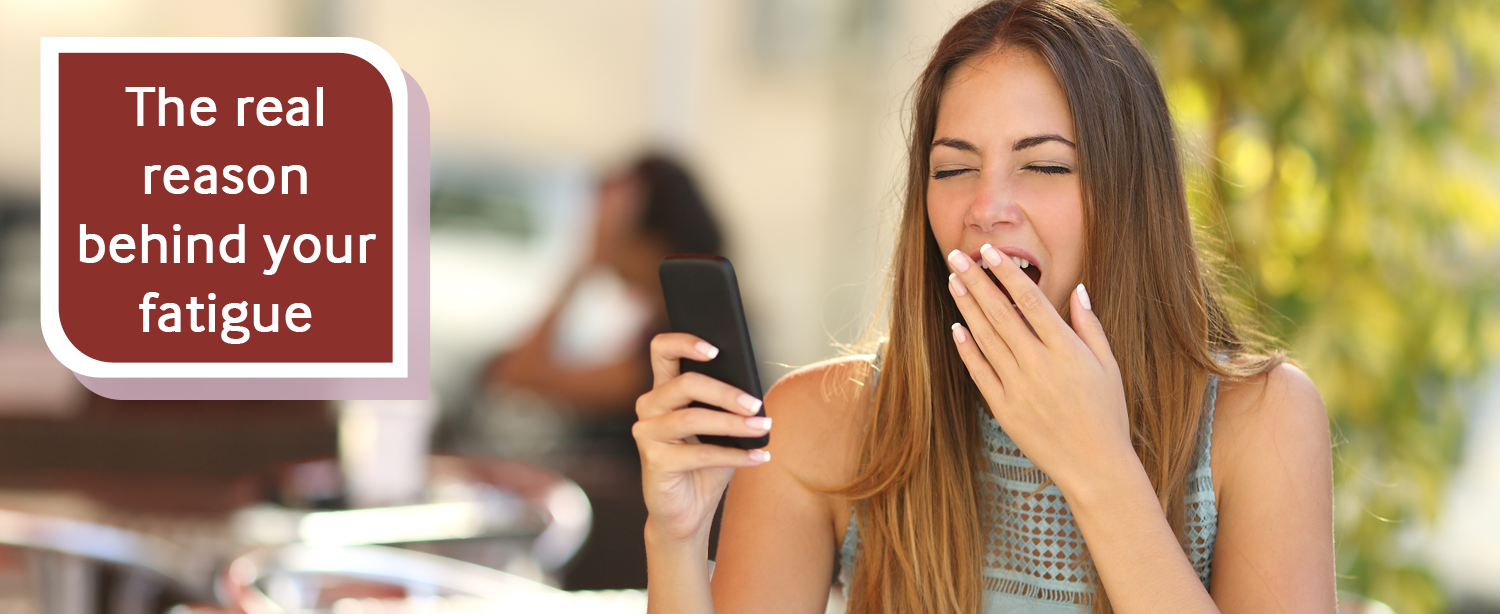Do you often ask yourself, “Why am I so tired?” Do you feel like no matter how much sleep you get, you’re still tired all the time? It does not mean you are lazy.
Getting a good night’s sleep is important, but how many of us make it a priority. Stimulants like coffee and energy drinks, alarm clocks, and external lights — including those from electronic devices — interfere with our circadian rhythm, or natural sleep/wake cycle. A good night’s sleep is needed to replenish your energy levels. But if you are getting enough rest and still feel exhausted, then your low energy level may be an indicator of an underlying problem.
Here are some possible reasons for your fatigue:
- Sedentary Lifestyle –With the technology boom it is common for many people to develop a sedentary lifestyle, be it office goers or home makers. Everything is available at your doorstep and easily accessible with apps. However this has a downside. Your body was made to move, in absence of regular activities, you can experience mood issues, sluggishness, fatigue, and weight gain. Regular exercise does wonders for the body by releasing endorphins, boosting your stamina and lifting your mood.
- Junk food diet – Diets high in saturated fats, trans fats , processed foods and added sugars can deplete your energy levels. Choose a healthy diet filled with many fresh fruits and vegetables.
- Stress – Stress can be a major reason for feeling tired and fatigued. Work life, personal life, prolonged illness, career pressure all may be reasons of stress. Make the right choices to avoid being in stressful situations. Try to manage your stress by yoga, meditation and taking up any hobby you enjoy.
- Vitamin D deficiency – Research suggests a link between low levels of this vitamin, low energy and depression. Consult your doctor and take vitamin D supplements if needed. Regular morning walks in sunlight also help get natural sunlight.
- Thyroid Disease – Fatigue, moodiness and muscle and joint pain are some of its symptoms. Get yourself tested today. It may be the hidden cause of your fatigue as the thyroid gland helps control your metabolic rate and energy levels.
- Chronic Fatigue Syndrome – It affects up to 80 percent of adults worldwide and is caused by a hormonal imbalance. Your adrenal glands release more than 50 different hormones, including the energy-regulating hormones cortisol and adrenaline. These key hormones increase and decrease according to the amount of stress being put on your body.
- Anaemia – Anaemia is a condition where a person has a lower than normal level of red blood cells. Anaemia is related to a low supply of oxygen reaching cells and tissues throughout the body. Felling tired and fatigued is one of its main symptoms.
- Not enough omega-3 – Try to incorporate foods in your diet that provide beneficial omega-3 fatty acids. It helps to reduce depression, which can make you feel fatigued. Foods rich in omega-3 include seafood, leafy greens, chia seeds and ground flax seed. Try to include more of these foods into your diet.
- Dehydration – Dehydration occurs when there is an excessive loss of body fluids, especially of water and electrolytes. When you’re dehydrated, your heart sends oxygen and nutrients to your brain, muscles and organs at a slower pace; as a consequence, you begin to feel fatigued, lethargic, moody.
Take a note of the above factors while finding the underlying reason of your fatigue. If it does not help, get a complete body health check up done with us to rule out any underlying diseases. After all preventative care is always recommended. Please see below link for further details:


